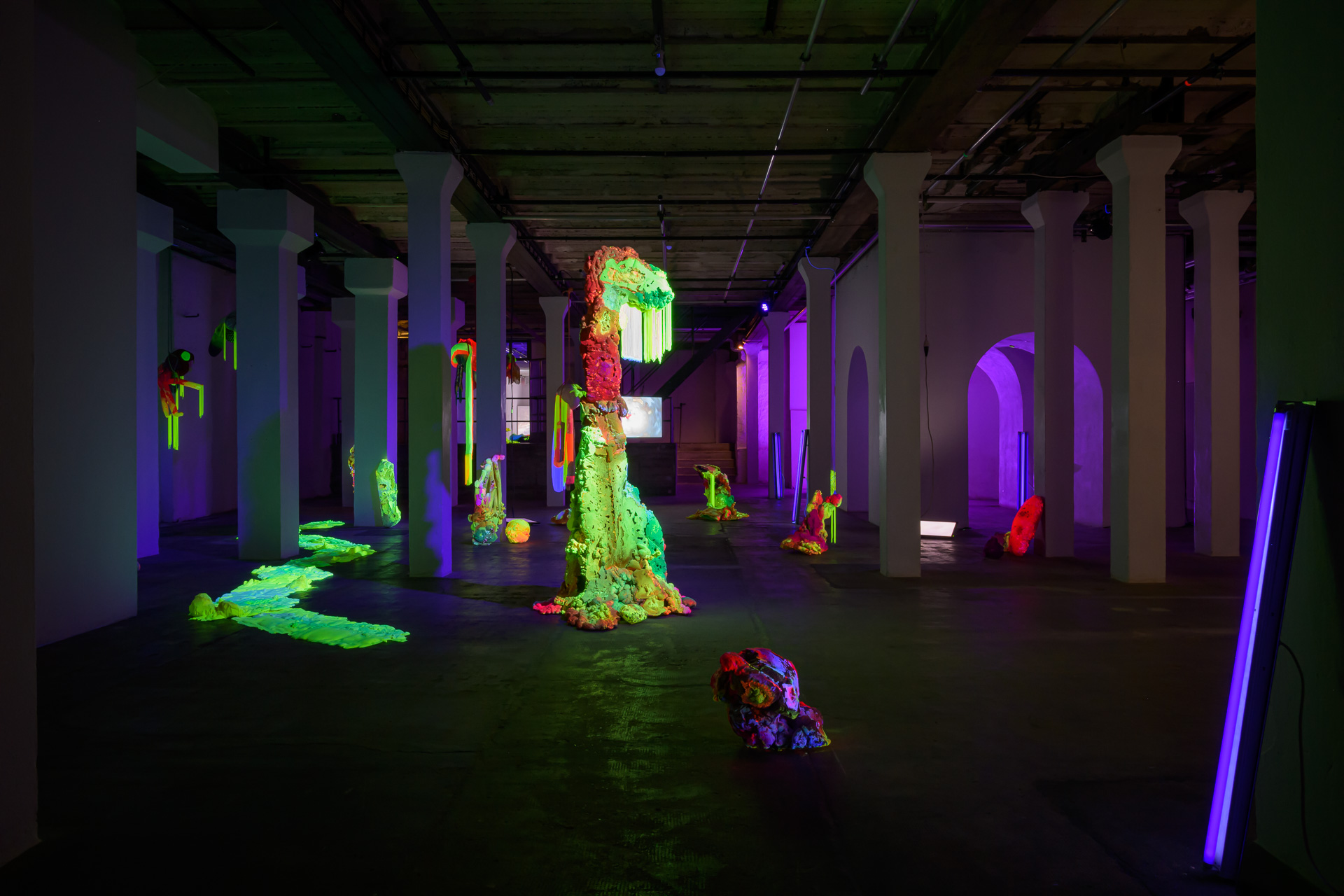
A Longing for Surrendering, is an immersive multimedia installation that explores embodied ecological thought and the intra-relationality between human and more-than-human ecosystems. Within a postnatural premonitory ‘cave of desires’, this installation charts inaccurate, disorientating and fractal narrative(s) reflecting upon the relation between the ’working body’, coral reefs and systemic (natural) anxiety.
A Longing for Surrendering poetically translates natural phenomena and interdependent ecosystems into an otherworldly and bodily environment, while proposing a luscious multi-sensorial (re)discovery of polyphonic sound/land/scapes. The work is assembled toward shape-shifting and intimate ‘encounterings’, in which fragility, speculation and touch are welcome. The audience is encouraged to explore the installation and through touching, to be ‘in touch’.
~ Excerpt ~ Exhibition text by Dr Heidi Brunnschweiler ~
Pedro Matias’ installations are about the interrelation between human and more-than-human ecosystems. The artist explores the ability of corals and humans to recover from the stress of changing environmental conditions such as global warming, a pandemic or systemic stress. Touch plays a central role. Corals are built by polyps, i.e. small animals, over thousands of years through constant calcification. To survive, most of them need so-called zooxanthellae, i.e. algae that settle in the outer skin of the polyps. Algae and polyps live in a biological symbiosis that benefits both sides. Humans and corals react differently to environmental stress. Under continous stress, both lose their regenerative capacity. As a stress reaction to the higher water temperatures, the corals separate from the zooxanthellae. Which means that the symbiosis which otherwise guarantees the survival of the corals is stopped. For the artist, during the pandemic the state-imposed separation from fellow humans in particular caused stress. He therefore began to sew fabric sculptures as an attempt to absorb the lack of human touch. Touch has a regenerative effect on humans. Matias speculates that the continuous stimulation of this nervous connection between brain and body organs through touch could help humans to regenerate their capacity for self-preservation they seemed to have lost due to permanent stress. In Matias’ installations, visitors are invited to touch the artificial coral landscape with their hands and feet in order to feel its fragility. Further more, they can also experience the regenerative effect of touching. This underwater landscape is populated by foam and textile sculptures, the Coralias and the Bivalvias. Both glow through the UV light like coral reefs. The artist used still existing, already threatened or already extinct corals as visual references for his sculptures. The underwater landscape is suffused with a soundscape dépaysement - a saudade do desencontro. It was composed from scans made of the Coralia and the Bivalvia coral sculptures. Individual voices emerge from the general noise. One particular sound is permanently audible, of a sculpture that no longer is present, reflecting on the ever-growing number of extinct natural species. (...)